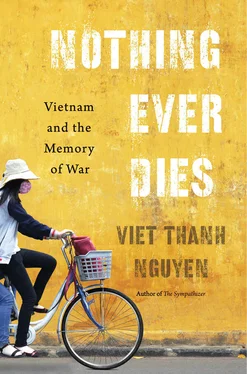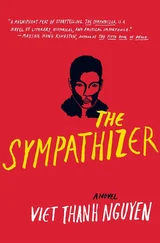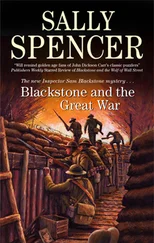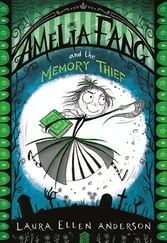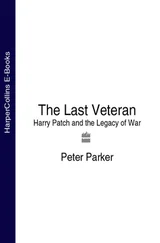The slogan’s refusal to judge soldiers also implies a refusal to judge the civilians. What lies behind the slogan is not only support for the troops but the absolution of the same civilians who utter the slogan. If the hands of the troops are clean, so are the hands of these civilians. As for the American dead, they have not died for nothing after all. This slogan has arisen in their memory, proving once again that the memories the living create of the dead — and the dead themselves — are strategic resources in the campaigns of future wars. Once the dead seemed to cry out against war, but now, just as plausibly, the dead seem to cry out in support of our troops who wage new wars. At least this is what the living say, and it is what the living say that really counts. As the scholar Jan Assman writes, “if ‘We Are What We Remember,’ the truth of memory lies in the identity that it shapes.… If ‘We Are What We Remember,’ we are the stories that we are able to tell about ourselves.” 7The story of supporting the troops affirms an American identity invested in the justice of American wars and the innocence of American intentions. This identity is the true “Vietnam Syndrome,” the selective memory of a country that imagines itself as a perpetual innocent.
Graham Greene both diagnosed and mocked this version of the Vietnam Syndrome in his novel The Quiet American , featuring the sober, idealistic, and almost virginal CIA agent Alden Pyle. In the name of supporting an anticommunist “third force,” he smuggles explosives into the post-French, pre-American Vietnam of the 1950s. Although it is not Pyle’s intention that this third force will kill civilians with these explosives in terrorist bombings, they do. Greene’s point is that both innocence and intention are excuses for the inevitably fatal consequences of American intervention. In this version of the Vietnam Syndrome where America is the dangerous naïf, war is something that Americans love rather than fear, despite any denials to the contrary. How else to explain the many wars that America has fought in its American century? What made Vietnam unique for Americans was that this love was unrequited, the war a tragic affair that ended badly, which Greene signaled in casting the fickle and enigmatic Phuong as Pyle’s lover. Pyle sincerely loves Phuong and wishes to marry her, but his demise, murdered by agents of the Viet Minh, seems not to bother her very much. While the campaigns in Grenada and Panama and the wars in Kuwait, Iraq, and Afghanistan have not generated these kinds of romantic allegories, they are efforts by American leadership to rebuild the American people’s love for war. The American soldiers who fought these wars make the emotional connection between past and present conflicts easily enough, or so argues former Marine Anthony Swofford as he describes the Marines preparing for Kuwait:
For three days we sit in our rec room and drink all of the beer and watch all of these damn movies, and we yell Semper fi and we head-butt and beat the crap out of each other and we get off on the various visions of carnage and violence and deceit, the raping and killing and pillaging. We concentrate on the Vietnam films because it’s the most recent war, and the successes and failures of that war helped write our training manuals. 8
These soldiers love war, or at least the idea of war, which is no surprise, as war is their calling. In order to love war and love their own side while hating the other side, they remember their own.
The black wall does not engage in such an obvious ethics of memory, although political interests have used it for that purpose. If the black wall engaged directly in this call to remember only one’s own, especially in the virile ways that the Marines enjoy, it would not be a very compelling memorial. Many memorials are more transparent and upright about celebrating wars, masculinity, heroism, and sacrifice, and few elicit the depth of attachment from visitors that the dark wall does. The wall’s power does not come from its complete commitment to war and soldiers but from its deep ambivalence about war and soldiers, who do not even appear personified as figures, faces, or bodies. The black wall is both mirror and barrier, and this is what shapes and creates the ambivalence. As a mirror, the wall shows the figures, faces, or bodies of its visitors over the names of the dead, while as a barrier, the wall separates the living from the dead. In this way, the wall foregrounds feelings of recognition and alienation, of intimacy and distance, of the relationship between the living and the dead. Both mirror and barrier, both a place that evokes sight and is a site, the wall captures how the dead belong to the living as their own but are also irrevocably other. And yet that otherness — the mystery and terror of death that is embodied by the dead — is one that will inevitably be shared by the living, who sense the otherness of their own inevitable mortality calling to them from behind that black wall. What makes the black wall powerful is its embodiment of remembering oneself as well as its evocation of otherness.
Maya Lin’s reflections on the black wall’s design suggest that the world around her shaped her aesthetic and the memory of being both oneself and other. “ To some, I am not really an American ,” she writes with emphasis, reflecting on her childhood in the American Midwest and the controversy around her selection. Lin was a college student when she won the competition for the design of the memorial, and some viewed her selection as an affront. They could not understand how a woman, a youth, and a Chinese American could design a memorial for men, for soldiers, and for Americans. The “feeling of being other … has profoundly shaped my way of looking at the world — as if from a distance — a third-person observer.” 9Compare this late-twentieth-century experience with W. E. B. DuBois’s claims in The Souls of Black Folk , from 1903:
the Negro is a sort of seventh son, born with a veil, and gifted with second-sight in this American world, — a world which yields him no self-consciousness, but only lets him see himself through the revelation of the other world. It is a peculiar sensation, this double-consciousness, this sense of always looking at one’s self through the eyes of others. 10
Many minorities besides African Americans also claim double consciousness for themselves. They experience this distinction between America’s dominant self — the white self — and its darker others not only in a worldly way, as part of a group cast as other, but also in a personal way. “One feels his two-ness, — an American, a Negro; two souls, two thoughts, two unreconciled strivings; two warring ideals in one dark body, whose dogged strength alone keeps it from being torn asunder.” 11The black wall emerges from this divided way of seeing the world for Maya Lin, but what is also powerful about double consciousness is its universal quality, one that paradoxically arises from the particularity of black experience.
While minorities may experience double consciousness regularly, even daily, the power of the black wall is that it conveys that sense to individuals who are not used to experiencing it, and then reconciles that duality. These visitors experience the double consciousness of seeing themselves and being seen by the dead, the ghosts of the soldiers who together comprise, in the words of classicist James Tatum, “an insurrection of the dead.” 12Perhaps what the visitor who touches the black wall and is touched by it feels is the sense that she, too, is a minority, regardless of race or culture. In this instance, one’s minority identity is to belong to the living, outnumbered by the hosts of the dead. But this moment of double consciousness is reconciled for many, if not all, by the commemorative, nationalist calls that have been delivered by presidents, soldiers, and veterans around the black wall. These nationalist calls allow visitors to mourn with and for the dead, and to submerge the potentially troubling manifestation of double consciousness into the singular consciousness of national identity, of the American, the patriot, the good citizen.
Читать дальше
